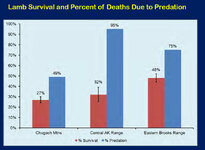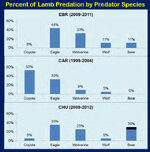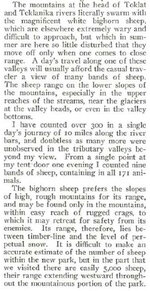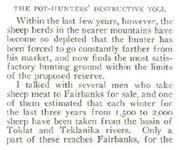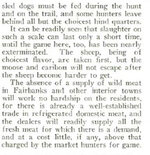ColeyG
WKR
- Joined
- Oct 25, 2017
- Messages
- 452
The more people I talk to about this "loss of the leader" theory, the more credibility I've come to believe it has.
In years past I think there were enough mature rams left on the mountain that younger rams could still find an experienced mentor to follow around.
These days, a given herd or local population may only have one or two mature rams in the mix. It is not hard to imagine the one or two older rams getting taken out in any given year due to hunting or other cause of mortality. In fact, I know if two examples of this having happened in the past year, one in the Wrangells and another in the Chugach. The legal rams in each area were scouted in advance of the season and killed by hunters, leaving behind a handful of younger,, I would say immature rams.
As a number of people have pointed out, it has become increasingly more common to see young rams alone or in very small groups without a mture ram in the mix. I just recall seeing that with any regularity a handful of years ago.
Watching young rams follow mature rams around in the mountains and queue all of their movements off of what the boss does, the links to survival and this leadership (winter/summer habitat, seasonal movements, avoiding predators, etc.) seem apparent.
In years past I think there were enough mature rams left on the mountain that younger rams could still find an experienced mentor to follow around.
These days, a given herd or local population may only have one or two mature rams in the mix. It is not hard to imagine the one or two older rams getting taken out in any given year due to hunting or other cause of mortality. In fact, I know if two examples of this having happened in the past year, one in the Wrangells and another in the Chugach. The legal rams in each area were scouted in advance of the season and killed by hunters, leaving behind a handful of younger,, I would say immature rams.
As a number of people have pointed out, it has become increasingly more common to see young rams alone or in very small groups without a mture ram in the mix. I just recall seeing that with any regularity a handful of years ago.
Watching young rams follow mature rams around in the mountains and queue all of their movements off of what the boss does, the links to survival and this leadership (winter/summer habitat, seasonal movements, avoiding predators, etc.) seem apparent.


